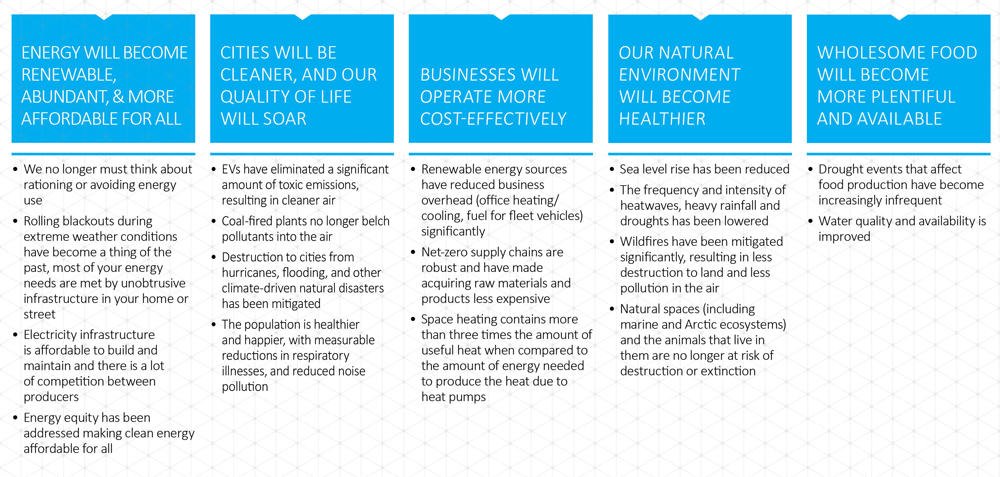
Alex Boyd
Biases and misconceptions often surround the energy transition. In this series of articles, I’ll take a closer look at some of the conclusions reached and underrepresented facts pertaining to the energy transition to address the tension often accompanied by these conversations, making room for more balanced and constructive dialogue.
In Part 1 of this series, “The energy transition and the path to a healthy environment,” I highlighted the health benefits of increasing renewable generation that are often overlooked.
In Part 2, “The energy transition and the need for fossil fuel support,” I advocate for a cooperative and collaborative relationship between the renewables sector and fossil fuels stakeholders with an “all fuels on deck” approach.
In Part 3, “Opportunities within the complexity and simplicity of the energy transition,” I contemplate the complexity and simplicity catalyzed by the energy transition and the resulting opportunities as we transform our industry away from fossil fuels toward renewables.
In Part 4, “Slowing down is not an option,” I underscore the urgency of transitioning our global energy industry for ourselves and future generations.
Part 5: Visualizing a post-transition world
We’ve all been exposed to a lot of negativities in the media lately. From the pandemic, politics and the climate crisis to human rights and wars, the world can get overwhelming. Of course, it can be easier just to tune all the bad news out—even when we should really be paying attention. But we all need to take notice when it comes to the energy transition.
As we know, any kind of large-scale change can be hard, but the transition from fossil fuels to renewables represents a seismic shift away from a standard that’s been in place for generations. By nature, this kind of major transformation comes with significant upfront challenges—but in this case, short-term difficulties will result in long-term benefits.
So how can we help ourselves stay focused on what we must do between now and 2050? Visualization.
Focus on the positive
When we visualize the positive results of things we know will be challenging, we’re able to stop hyper-focusing on the negatives (it’s hard, it’s costly, it’s going to take years…) and instead allow ourselves a glimpse into the many positives (cleaner air, energy equity, increased quality of life…) that we’ll reap in the future. By permitting ourselves to think about how our world could and will be better, we are preparing to challenge the status quo and work hard to bring about change.
What might our post-energy transition world be like? Let’s take a peek into what a morning routine might look like in the future.
Flash forward to January 2050
You awake early to start your morning routine. North America is close to meeting the mandate for achieving net zero and the world looks vastly different than it did a few short decades ago.
It’s a chilly winter morning, but since your utility has switched to renewables, you don’t give a second thought to turning up the thermostat to warm the house or switching on the lights (rolling blackouts used to be a chronic problem). And not only is the electricity renewable, you know that you are moving heat from one place to another using a heat pump – not creating more heat – which is by far the most efficient way to heat things.
You wander into the kitchen to fill the espresso machine with water directly out of the tap. Water quality and availability have now dramatically improved, so the need for extra filtration is gone.
Your teenagers (yes, you have kids now!) are already up and dressed, cooking their breakfast on your electric stovetop since gas appliances were done away with years ago. You appreciate that your induction cooktop creates the heat exactly where it’s needed, in the base of the pan. And because drought events have been curtailed, food production has increased, so you have a wider variety of robust produce to offer your family.
Meanwhile, you are reading the news on your device and articles about energy security are almost non-existent now because countries have reduced their reliance on imports of oil, gas and coal, using local, renewable resources instead.
Shuttling the kids to their respective schools in your EV, you are grateful for all the electric vehicles now on the road. No more respiratory issues and the traffic noise has also declined. Or perhaps you live in the city and your kids walk to school so they are not breathing in any toxic exhaust fumes.
As you progress to work, you see a friend walking her dog at a community park where once there was an industrial site that spewed pollutants into the air. At work, you observe the real-time display in the lobby that tracks the amount of electrical and thermal energy used in the building, which equals the renewable energy generated on-site via solar panels, making it a net-zero space.
At a glance: The real impact of net zero
With the move to renewables, we’ll see a substantial positive impact in our homes, businesses, services, public spaces, and the supply chain. Let’s break it down:

Tomorrow starts today
Visualizing a net zero world enables us to better understand the transformative outcomes we can reach—and helps give us the momentum we need to work to attain them. The good news is, much or all of this is very achievable—but only if we act now, proactively and aggressively, to move toward net zero by 2050.
In the sixth and final article of this series on the Energy Transition, I share some ideas about the role government could or should play in the energy transition while balancing stakeholder interests and building a sustainable future for the environment.
